 Your new post is loading...
 Your new post is loading...

|
Rescooped by
Rémy TESTON
from Social Media and Healthcare
January 7, 2017 2:59 AM
|
The battle for the best pharmaceutical marketing practices has begun. And the big guns are now digital pharma marketing gadgets. Social media has slowly but surely bought its place in the pharma marketing budgets, reducing traditional marketing budgets. Channel mixes are now placing use of digital tools, devices and analytics support systems as the next strategic advantage and area of development. Multichannel marketing in pharma therefore is in vogue. In the US on digital marketing spending by pharmaceutical industries is in billions. Many trends are shaping this change. The stakeholders of the healthcare industry are evolving and continue to expand their roles both within and outside of their domains. With the rising healthcare costs, the need to develop virtual solutions is also becoming eminent. Furthermore, the customer directions are changing. Physicians are not just passive recipients of information, but now seek active engagement and input from pharma companies to ensure they provide the best care to patients. The patients themselves are becoming aware and active regarding their health decisions. This again creates a new channel of consumer engagement for pharma, which can only be successfully attained with the help of social media. It is important to understand the magnitude of growth of social media overall to perceive the kind of benefits pharmaceutical marketing can obtain using this medium. Social media has become the key source of health seeking information for patients. Around 34% of Americans regularly use social media for this purpose. Twitter became a popular means to send information among physicians. It has now become a common ground for physicians to share information and ideas. Finally, the same has become an effective medium for patient education and connection by health policy makers and providers. The social media therefore is the new front to engage both physicians and patients. Pharma marketing strategies therefore need to infuse digital media as a key ingredient in their efforts to drive optimum results.
Via Plus91
I heard on Twitter that no one wants to see your "Year in Review." @lucyboyen, for example, tweeted "I looked at my year in review and thought to myself you know who wants to see that? Absolutely nobody."
Yes, 2016 was a lousy year for many people and even for the drug industry, but for different reasons. Yet if you look at the numbers, you will find some good news as well. So I feel justified in collecting together this Slideshare "2016 Year in Review" focusing on the many charts and graphs that I have published via Pharma Marketing News, Pharma Marketing Blog, and curated via Pharma Industry News Update. Hope you find it useful.
Find the PPT here.
Via Pharma Guy

|
Scooped by
Rémy TESTON
December 13, 2016 1:05 AM
|
London, December, 12, 2016Novartis International AG / Novartis lance SMS for Life 2.0 au Nigeria pour aider à améliorer l'accès aux médicaments essentiels . Est traité et transmis par Nasdaq Corporate Solutions. L''émetteur est uniquement responsable du contenu de ce communiqué de presse.

|
Rescooped by
Rémy TESTON
from Pharma Hub
November 13, 2016 2:59 AM
|
If you didn't get the digital health memo: incubators and accelerators are out, long-term partnerships and mentorships are in. That's the theory behind StartUp Health's new partnership with J&J's pharma arm, Janssen.
Via Philippe Marchal
“We don’t want to miss the train of digital health” is a phrase I often hear from pharmaceutical companies. However, there are no trains to catch anymore. Disruptive healthcare trends are the futuristic spaceships many pharma companies don’t even see flying above them. If pharma doesn’t prepare for the coming waves of change, it won’t …
Via Lionel Reichardt / le Pharmageek
A la tête de la R&D du groupe Sanofi depuis huit ans, Elias Zerhouni a livré ce jeudi sa vision de ce que sera la médecine du futur. Génomique et intelligence artificielle contribueront à faire émerger une médecine de précision, fondée sur une compréhension intime des mécanismes biologiques.
Via Lionel Reichardt / le Pharmageek

|
Rescooped by
Rémy TESTON
from Social Media and Healthcare
October 31, 2016 2:12 AM
|
More than half of big pharma now uses Instagram in some form, though companies' corporate accounts - traditionally the first to be set up - are just behind that milestone. The most recent of those to launch a corporate presence is GlaxoSmithKline, which joined the photo sharing social network last month promising to “explore what's behind the science and discover some of the latest healthcare innovations”. GSK joins the likes of Novartis, Pfizer, Sanofi and Teva in having a companyInstagram account, and in total nine of the top 20 firms have followed this route. Pushing the industry's use of Instagram just over the 50% mark (11 out of the top 20 companies) are careers accounts from Merck & Co and AstraZeneca. Acquired by Facebook in 2012, Instagram has a long way to go before it challenges its parent company's dominance, but - with its user base heavily skewed towards a younger demographic - it comes second for reach and use among those under 35. For those 35 and older, US research carried out in December 2015 by comScore places it second for use but behind LinkedIn, Twitter and Google+ when it comes to reach. In reviewing pharma's use of Instagram it can be seen that a number of companies' names are already in use … just not by them - a familiar social media issue for companies and brands that don't move quickly enough when new channels emerge. Consequently, the likes of AstraZeneca, AbbVie, Amgen and Astellas may need to be a little bit creative with their user names should they want to sign-up.
Via Plus91

|
Rescooped by
Rémy TESTON
from Digital Health
October 24, 2016 1:29 AM
|
mHealth experts at Partners' Connected Health Symposium say digital health tools could improve everything from clinical trials to drug efficacy. But progress is slow.When Apple launched its ResearchKit platform in 2015, healthcare providers and the pharma industry hailed the mHealth platform as a meaningful step toward better clinical trials.They’re starting to see that pay off.Not only can they streamline the trial process and open it up to larger populations, but they can also help providers and pharma companies make sure the right drug gets to the right patient.Speaking at Partners Healthcare’s Connected Health Symposium this week in Boston, Dwyer – whose portfolio includes launching the mHealth diabetes company Telcare – used Alzheimer’s as an example. The disease affects some 5.4 million Americans each year, or one in nine seniors, and is the 6th leading cause of death. Financially, it costs the U.S. healthcare system some $236 billion in 2016, while forcing families to spend more than $5,000 a year in caregiving costs.
Via Alex Butler
Johnson & Johnson Innovation LLC (JJI) today announced the creation of the Center for Device Innovation at Texas Medical Center (CDI @ TMC), a broad, new collaboration between JJI and TMC that aims to accelerate end-to-end development of breakthrough medical devices. This expands on JJI’s collaboration with TMC established earlier this year with the opening of JLABS @ TMC, combining the resources of the world’s largest medical complex with the capabilities of the Johnson & Johnson Medical Devices Companies*, to advance the health and well-being of people around the globe. The CDI @ TMC will include multiple components that will accelerate the development of new medical technologies from concept through commercialization, including a new medical device engineering studio housed at the TMC Innovation Institute. This state-of-the-art “maker space” will be home to R&D staff of the Johnson & Johnson Medical Devices Companies and will be used to accelerate both select internal projects and strategically aligned ventures of JJI partner companies.
Via Pharma Guy

|
Rescooped by
Rémy TESTON
from Digital Disruption in Pharma
October 7, 2016 1:40 AM
|
The good news is that pharma is solidly onboard with social media use. The not-as-good news is that most companies still have work to do in understanding their social media audiences, according to the latest Social Check-up by Ogilvy Healthworld, part of Ogilvy CommonHealth.
The group partnered with Pulsar for its third annual review of pharma social media use, with researchers expanding this year from 13 companies to include the 20 largest pharma companies by revenue. They evaluated each one’s corporate social media presence, including the number, type and content theme of posts across Facebook, Twitter, YouTube and Instagram.
Boehringer Ingelheim and Novo Nordisk ranked at the top with the highest social media engagement numbers, while Allergan, Teva, Takeda, Gilead and Astellas all ranked pretty closely together among those with the lowest engagement.
However, simply putting out the most content didn’t always equate with better engagement. Eli Lilly, for example, posted the most content by pure number of posts during the 6-month period study, but the Indianapolis drugmaker only ranked slightly above average in engagement.
In general, the average pharma company’s use of social media tracks closely with general business posting rates, the researchers said. Every week, the pharma companies averaged 7 Facebook posts, 26 Tweets, one YouTube video and four Instagram posts.
As far as what those posts contained, Ogilvy CommonHealth found that 29% were about disease awareness, followed by 25% company news, 19% around meetings and events, 13% corporate social responsibility, 8% product and research updates, 2% pharma industry news with the remaining 3% other topics.
Via Pharma Guy
Through embracing new tech the healthcare and pharma industries have paved a way to create new and better experience for their digital-enabled customers
Via eMedToday

|
Rescooped by
Rémy TESTON
from E-santé, Objets connectés
September 21, 2016 1:56 AM
|
Si on pouvait visualiser la situation amoureuse sur Facebook, de l'industrie pharmaceutique et des réseaux sociaux, on pourrait lire certainement : "C'est compliqué". Pourtant, un mariage entre eux est bien envisageable ! Voici 3 prérequis, selon moi, pour que ce mariage se transforme en parfaite idylle. Parmi les réticences à l’utilisation des réseaux sociaux par l'industrie…
Via Bruno Demay

|
Rescooped by
Rémy TESTON
from E-patients, e-patients 2.0
September 15, 2016 1:10 AM
|
Les nouvelles technologies apportent une réponse concrète aux problématiques quotidiennes des établissements de santé, en particulier dans l’amélioration de leur organisation. La transformation numérique des hôpitaux est en marche…
Via Festival Communication Santé
|

|
Scooped by
Rémy TESTON
January 4, 2017 2:31 PM
|
L'une des marques phares de la branche dermo-cosmétique du groupe pharmaceutique Pierre Fabre, Elancyl, a décidé de faire le déplacement à Las Vegas, au CES 2017, pour présenter sa dernière génération d'accessoires dédiés à la lutte contre la cellulite, le Slim Massage Coach.

|
Rescooped by
Rémy TESTON
from Social Media and Healthcare
December 13, 2016 2:10 AM
|
Each year, a new generation of Americans begins their search for a primary care physician. These millions of newly-fledged adults are among the most technology savvy people in the world, having grown up in a culture with a new way of advertising. Instead of print ads and traditional media, social media (including Facebook, Twitter, Snapchat, LinkedIn, and Pinterest) and search dominate the landscape. How can you as a medical professional take advantage of this new era to advertise and more importantly, grow your business? SEO targeted marketing for healthcare. Millennials' have erratic search behaviors that aren't easily translatable into SEO strategies. So how does one target them? You could shift focus to what we do know about them. 1. Most Millennials Choose Doctors Based On Personal Recommendations A whooping 70% of Millennials, turn to friends and family when searching for healthcare services. To capture this market, you could create a referral system. Build a feedback system for your patients and monitor their comments periodically. You could also request happy customers to refer you to their network on social media. However, collecting referrals is tough, and only a small number of the people you reach out to are likely to participate. Since the targets in question are Millenials, you could use a social interactive tool like Klout to prompt those referrals. 2. Most Millennials Refer To Online Healthcare Information Resources In fact, more Millennials consume healthcare content than any other generation. A good part of them feel rushed during visitation, and are likely to surf the web to complete their incomplete understanding of healthcare issues. As healthcare professionals, you either have to provide that information yourself, or source it for your patients. Refrain from syndicating or otherwise republishing content from top blogs or standard medical texts, like many healthcare organizations do. If you do reuse content, follow these guidelines: Prevent the folder with the republished content from being indexed by excluding it in your robots.txt file, orUse the canonical link element to point to the real source of the information, and/orAdd additional value to the republished content; add your opinion, explanation, video, images etc. But the best guideline remains: don't reuse other's content on your site. 3. Most Millennials Source Their News From Facebook Over 88% of the Millennial population search for news on Facebook. Some of them also use Twitter, LinkedIn and Pinterest. If you have a PR team in place to build your brand, have them focus on social media. Informational healthcare write-ups are great, but they can't compete with real stories. Accounts of actual patients and their experiences are relatable, and are more effective as social media stories. Make it a practice to interview your patients once every few months and collect their experience to tell as stories. You could increase shares and reach for your social media stories by building a network of advocates on an advocacy tool. Curate content for your social pages with curation services like DrumUp or Storify. 4. Most Millenials Are Likely To Voice Criticism Online In the healthcare industry, credibility is of prime importance. While Millennials don't fret about the credibility of their information sources, we do know that they trust friends and family. That is why it becomes important to monitor your brand on social media, and on the internet in general. Positive mentions of your service could be shared for better impact, and negative mentions could be resolved before they balloon. You could also keep track of what your competition is doing and adapt the tactics that seem to be working for them. A reliable mention monitoring tool like Mention could help. 5. Most Millennials Want Interactive And Instant Solutions In 2015, the average attention span of people fell to about 8 seconds. People either find what they are looking for or they quickly lose interest. How do you connect with people who move that quickly? What could add value to quick and urgent searches? Remember, when people search for healthcare solutions, their search terms rarely include specializations and probably include healthcare issues. Instead of sharing complicated doctor bios, share content that your audience is likely to search for. It is also a good idea to make taking action easy. Enable click to call, make an appointment and patient log in on your website. Two simple keys to implement effective healthcare SEO – consider what they are searching for and what they expect. With Millennials, it is quick information on social media and a wholesome healthcare experience.
Via Plus91

|
Rescooped by
Rémy TESTON
from Pharma Hub
November 19, 2016 1:31 AM
|
Novartis has abandoned a 2016 goal to start testing its autofocus contact lens on people, though it said the groundbreaking product it is making with internet giant Google is 'progressing steadily.'
Via Philippe Marchal

|
Scooped by
Rémy TESTON
November 11, 2016 1:50 PM
|
Facebook cherche à capter une plus grande part des 5 milliards de dollar

|
Scooped by
Rémy TESTON
November 6, 2016 3:02 AM
|
IsraelValley : Votre rendez-vous sur l’économie d’Israël : high-tech, finance, industrie, emploi

|
Scooped by
Rémy TESTON
October 26, 2016 1:19 AM
|
Aider les objets maltraités par le stress : touillettes mâchées, gobelets déchirés et autres capuchons mordillés. Pari relevé sur le YouTube Lab, par Sanofi, Marcel et Lolywood dans une vidéo musicale et parodique très (ré)créative. Une seule question : #

|
Rescooped by
Rémy TESTON
from Digital Disruption in Pharma
October 20, 2016 1:25 AM
|
Actress and singer Queen Latifah recently took her passion for heart disease awareness live on social media, leading a “Rise Above Heart Failure” panel discussion on Facebook Live on World Heart Day. Novartis sponsored the American Heart Association's effort. Novartis has struggled to gain share with its heart failure med Entresto because of the treatment's high price tag, despite strong endorsements from leading cardiac groups and published research advising physicians to switch to the drug. And using a softer-style disease awareness campaign with a very likable celebrity is a contrast to its harder-hitting Entresto DTC marketing, which sparked protests from cardiologists and consumers for its stark depiction equating heart failure to a room filling with water while a patient calmly reads the paper (read “All We Have to Fear is... Scary #Pharma Disease Awareness Ads!”; http://sco.lt/96jYR7). That ad was quickly discontinued, replaced this spring with more sentimental ads featuring older heart failure patients warbling the Annie show tune "Tomorrow" as they go about their day (read “Tomorrow, Tomorrow, After DTC, Sales Will Come for Entresto, Bet Your Bottom Dollar!”; http://sco.lt/7L6LHl). “The way people look for health information is constantly evolving, and we do our best to keep up with the needs of our audiences,” a Novartis spokesman said in an email interview with FiercePharma. “We were drawn by the potential of Facebook Live to reach a wide audience in real time, to facilitate live engagement, and to allow on-demand viewing.” Novartis will be launching a “new social media initiative for the HF community” in the coming months, he added. Latifah has been the spokesperson for Rise Above since it launched last year. Novartis approached her and her mother Rita Owens, and they joined the effort as a way to amp up the conversation around heart failure and inspire people to make small changes in their daily lives to manage the disease. Owens was diagnosed with heart failure after she passed out as school teacher while in her early 50s, and before that, she didn’t know she had heart problems. Both Latifah and her mother participate in events, videos, media interviews and on social media as part of the initiative
Via Pharma Guy
Big pharmaceutical companies have found replacements for the army of sales representatives they've laid off in recent years: digital sales tools that seek to sell doctors on drugs without the intrusion of an office visit "You can't eat the orange and throw the peel away - a man is not a piece of fruit," says Willy Loman in Act 2 of Death of a Salesman. Today, many pharma sales reps may be feeling like tossed peeled fruit. eDetailing in one form or another seems to be making a comeback since the recession hit the drug industry in 2007 and 2008 (see chart on right). I'm not really sure which is the "chicken" and which is the "egg"; ie, whether an uptick in adoption of eDetailing technology lead to the recent layoff of pharma reps or if reps were laid off because of the economy and subsequently replaced by machines. Despite the title of this post, reports of the death of pharma "salesmen" may be somewhat exaggerated and not all sales reps can be replaced by machines.
Via Pharma Guy

|
Scooped by
Rémy TESTON
October 3, 2016 2:58 AM
|
«La forte récurrence (de certains produits ndlr) permet d'éviter le cash burn», explique Pharmasimple qui a recourt à une technologie de «gestion Big data».

|
Scooped by
Rémy TESTON
September 22, 2016 12:22 PM
|
Peu investi dans la e-santé, comparé aux big pharma, le troisièm

|
Rescooped by
Rémy TESTON
from Digital Health
September 17, 2016 2:29 AM
|
Global pharmaceutical company Pfizer has launched a new consumer-facing app aimed at helping to motivate adults with depression. The app, called Moodivator, will be available for free on the iOS app store.
Via Marc Phippen
|



 Your new post is loading...
Your new post is loading...

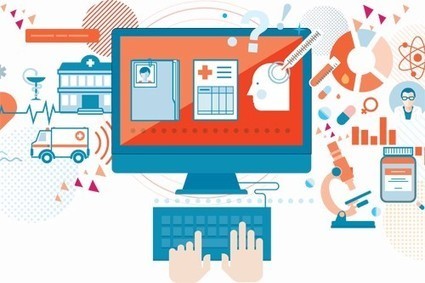

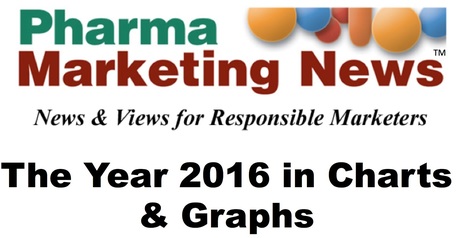





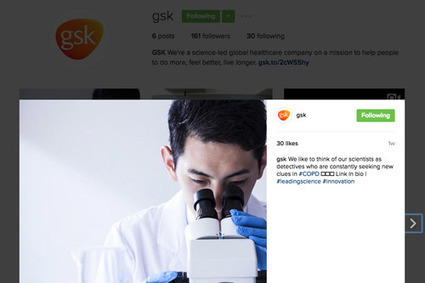



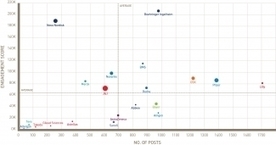


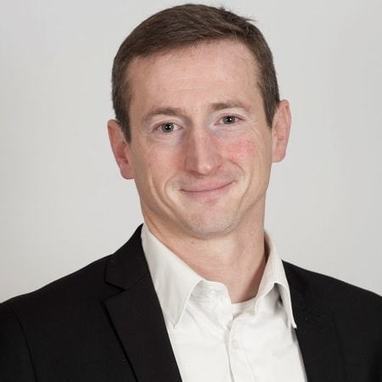
![[CES 2017] Slim Massage Coach, l'objet connecté contre la cellulite signé Pierre Fabre | Digital Pharma news | Scoop.it](https://img.scoop.it/5VGkuE2AKrDkMNwJnLFTTTl72eJkfbmt4t8yenImKBVvK0kTmF0xjctABnaLJIm9)

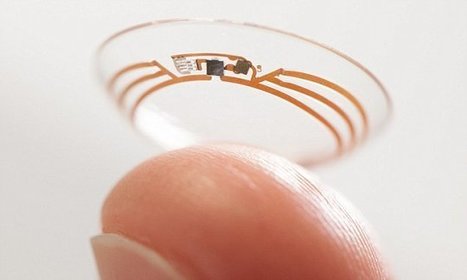
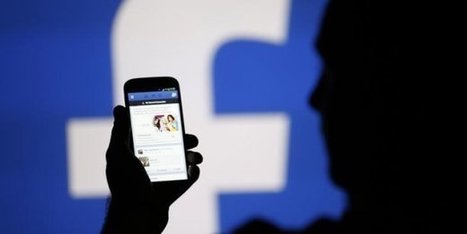




![[Exclu] Pharmasimple lève 1 million d'euros et part en croisade contre les laboratoires pharmaceutiques | Digital Pharma news | Scoop.it](https://img.scoop.it/DBG0VYT5GEMnIWQHj21c4jl72eJkfbmt4t8yenImKBVvK0kTmF0xjctABnaLJIm9)






